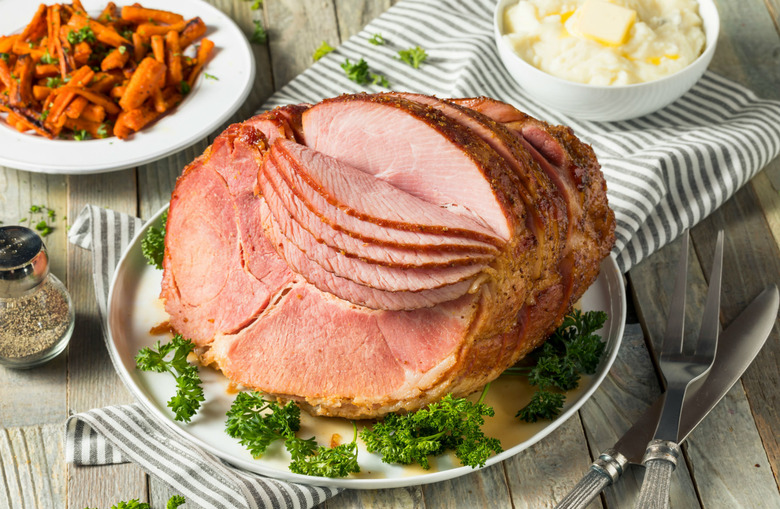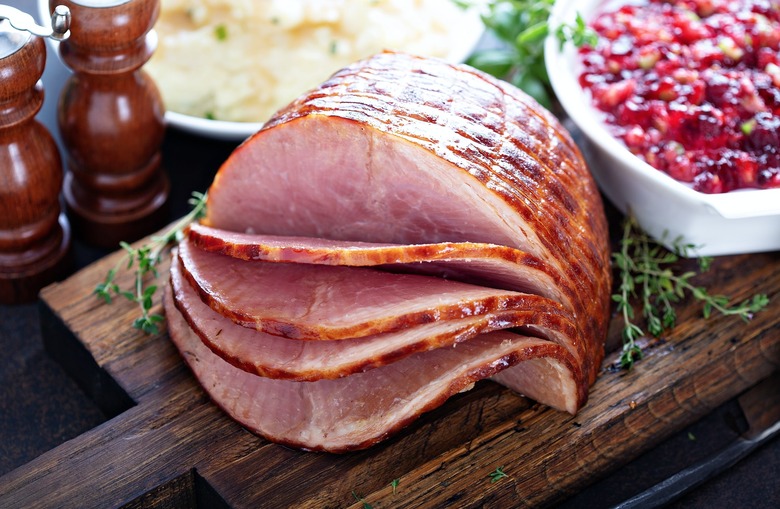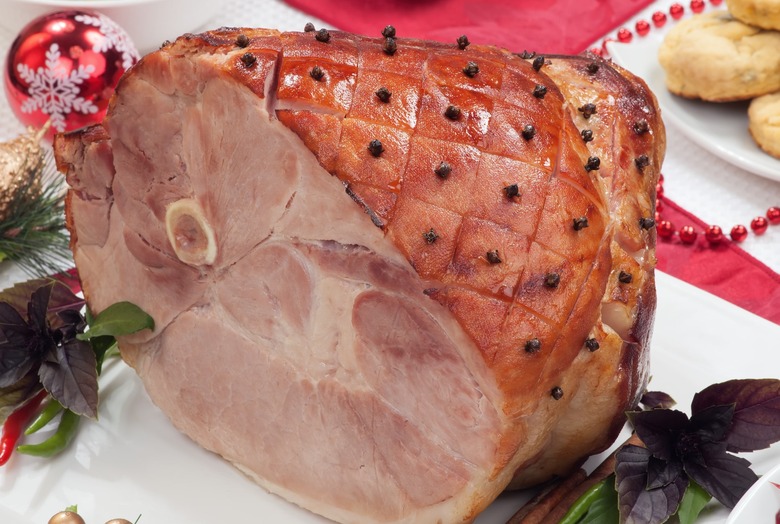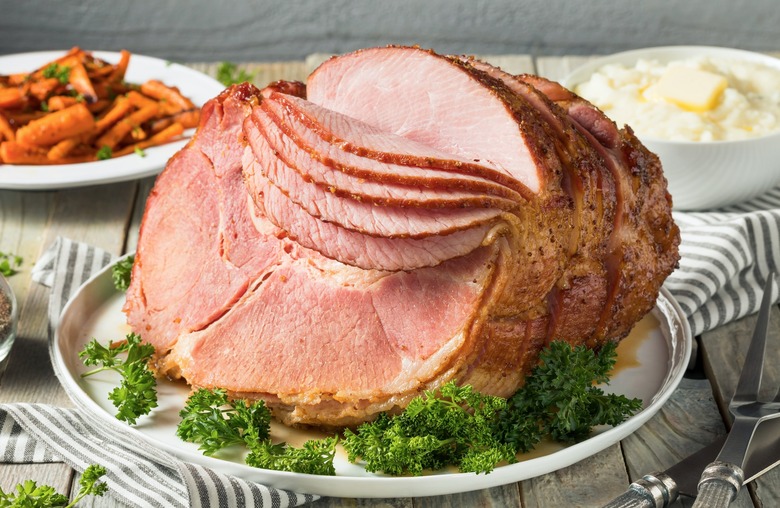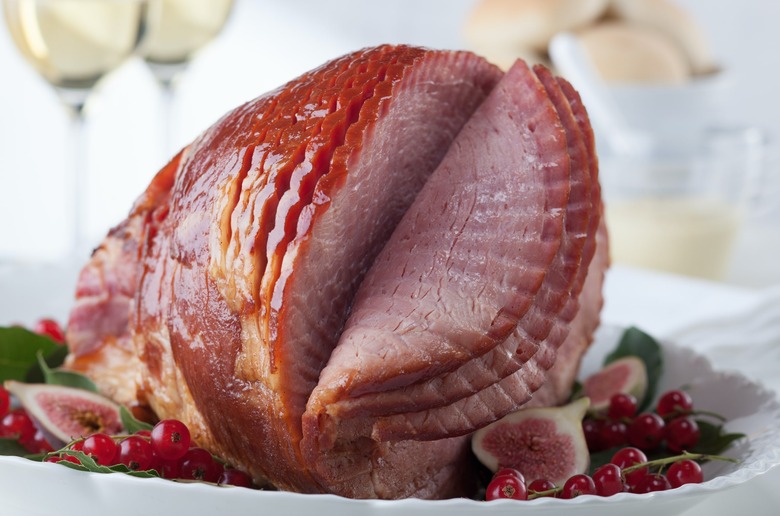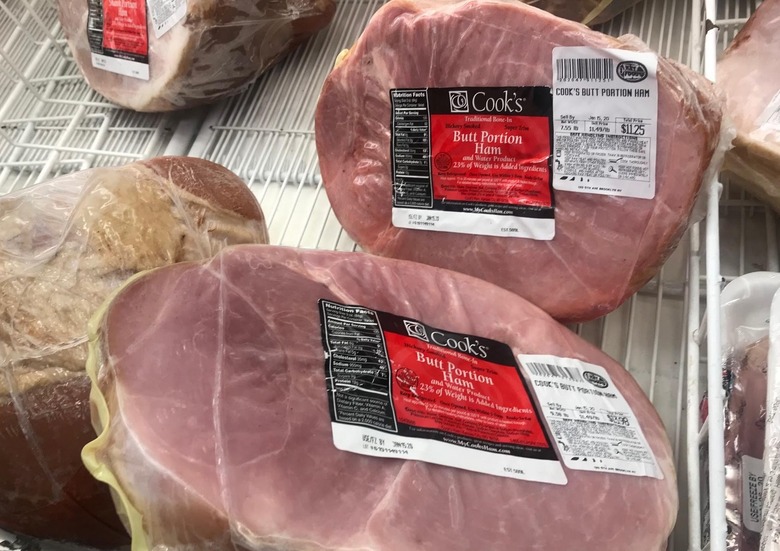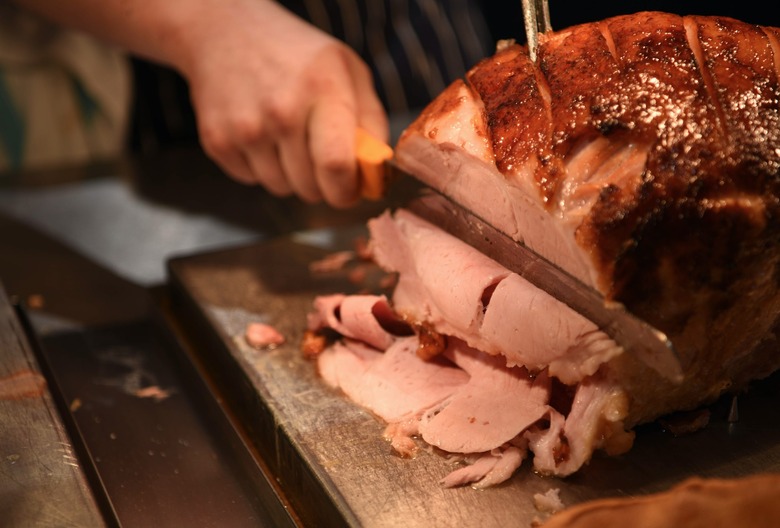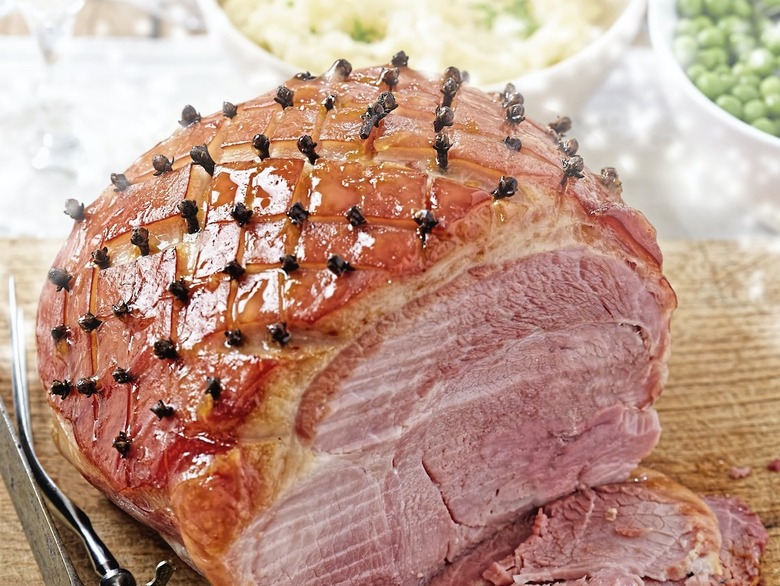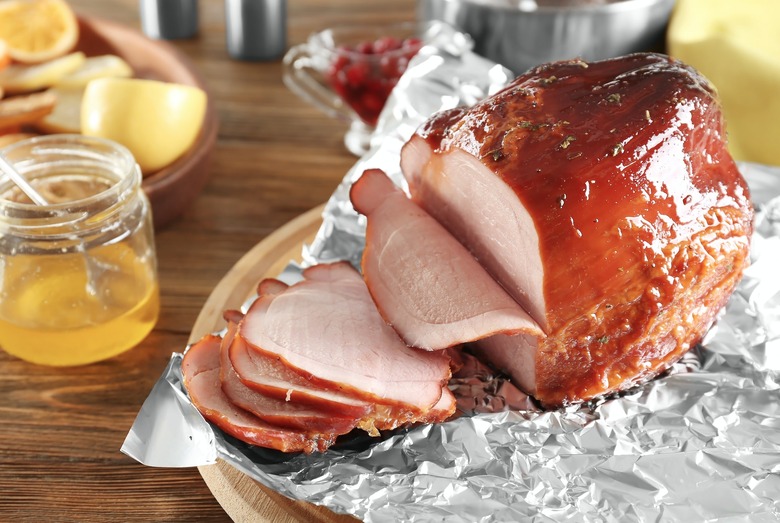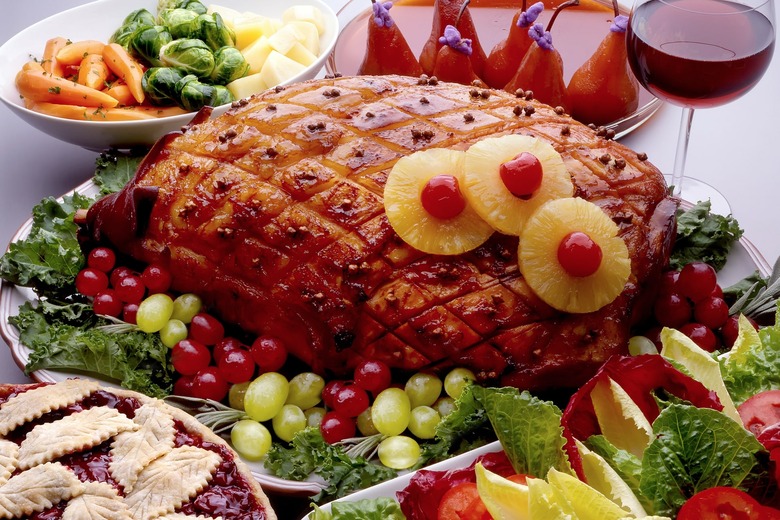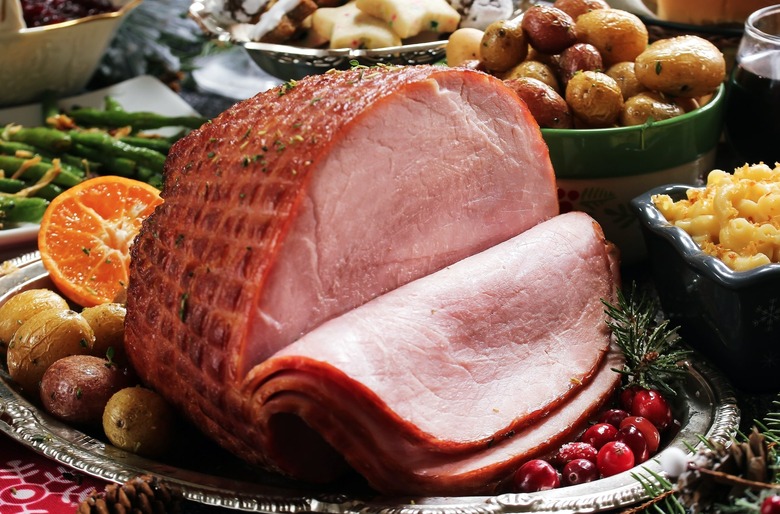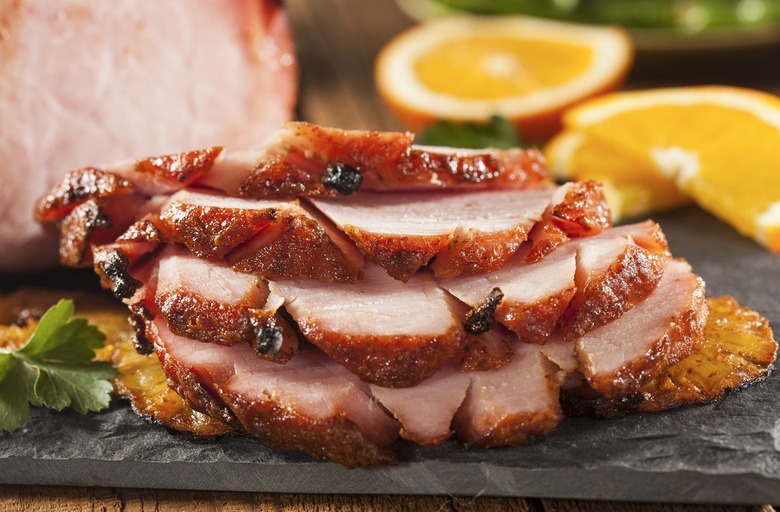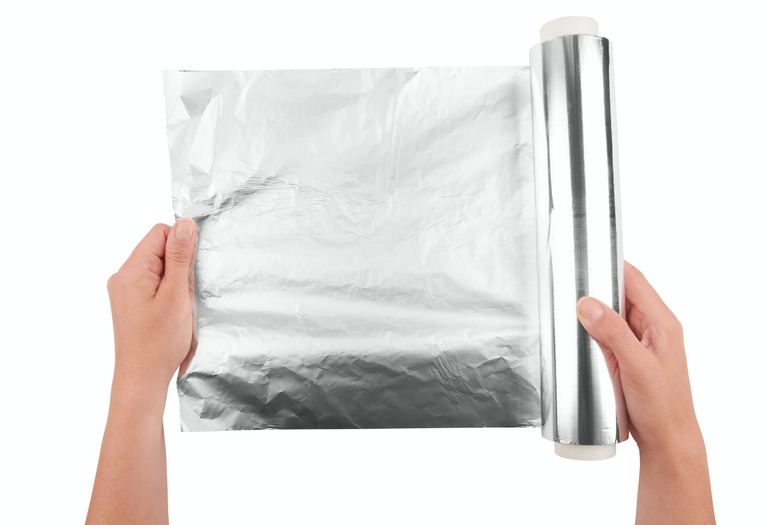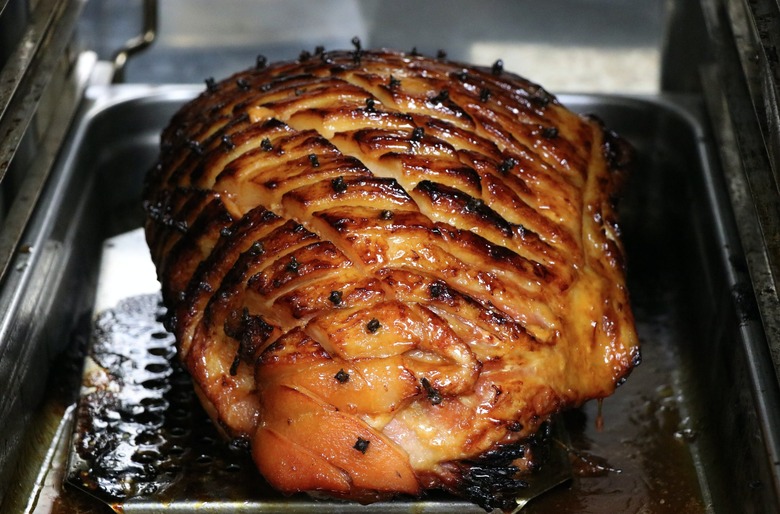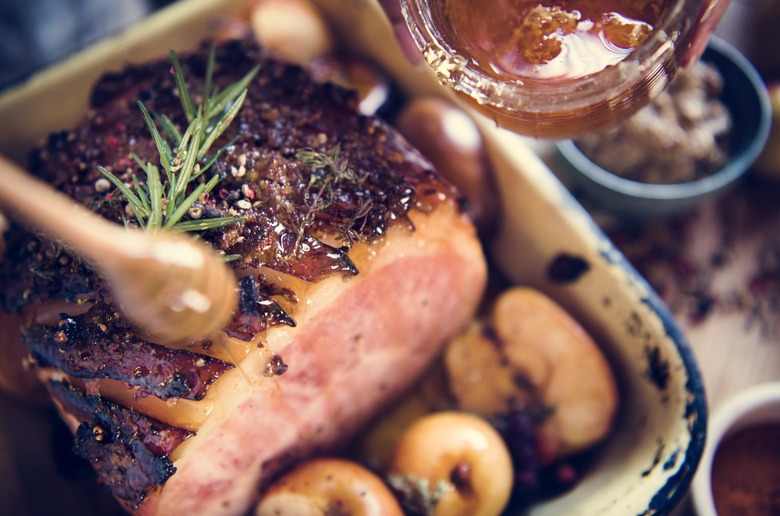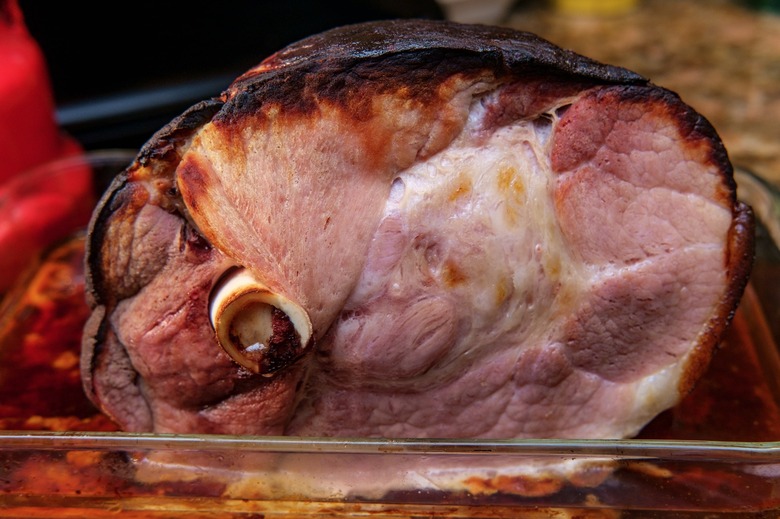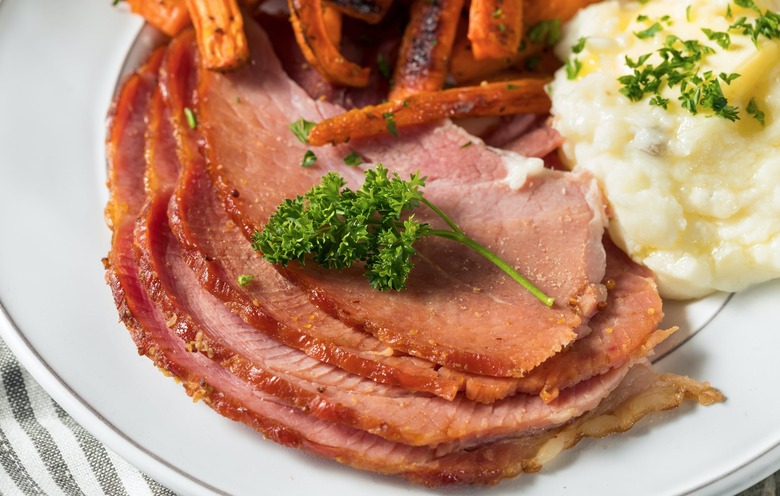A Step-By-Step Guide To Cooking The Perfect Ham
A ham can be the centerpiece of a celebration, and it also has a reputation for being super easy to make. All you do is remove the packaging, stick it in the oven and heat it through, right? Well, sure, that's one way of doing it. But if you want your ham to be as good as it can be, then you're going to need to keep a few things in mind.
Know the different kinds of hams
There are a few different types of ham out there, namely fresh hams (just raw pork leg), dry-cured hams or country hams (which are hung to dry, occasionally smoked, very salty and resemble prosciutto) and wet-cured hams or city hams (which are brined and also occasionally smoked). For today's purposes, we're talking about city hams, which are the ones overwhelmingly found at supermarkets and what most of us think of when we think of ham.
Boneless or bone-in?
Do you want a boneless ham or a bone-in one? Boneless hams have had the bone removed, usually along with some of the fat, and are easier to carve. But if you don't mind taking the time to cut around the bone, we suggest you buy your ham bone-in. Bone-in hams tend to be more flavorful than boneless hams, and they make for a more attractive centerpiece. And as an added perk, you can use the hambone in soups and stews after your ham dinner has ended. Canned hams, which are made by pressing together scraps of ham, are best avoided entirely.
Water content
When buying a city ham, you'll most likely encounter one of three different water content categories: ham with natural juices, ham with water added, and ham and water products. This all refers to protein-to-water ratio. In general, the more water a ham contains, the less expensive it will be. Ham with natural juices has the least amount of added water and is the best for special occasions. Water added is best for steaks and water products is best for sandwiches.
Spiral-cut?
There's no shame in buying a ham that's already been spiral-cut, which guarantees even slices and makes carving a breeze. But if you're planning on cutting the ham into big chunks or just want to carve it yourself, then buy it whole.
Butt or shank?
Because they can weigh 15 pounds or more whole, most hams are cut into two pieces, the butt (the top half of the leg) and the shank (the bottom half). The butt end contains more meat than the shank (which tends to be a little bit fattier) but can be more difficult to carve because it contains both the hip and pelvic bone, as opposed to just the shank bone. There's no need to buy a whole ham unless you're planning on feeding more than 20 people.
How much to buy
Bone-in hams have less meat per pound than boneless, so you should assume about three-fourths of a pound per person for a bone-in ham and a half-pound per person for boneless. Even if they don't eat that much, you want to make sure there are some leftovers.
Prep the ham
Now that your ham is home and removed from its packaging, place it cut-side down in a foil-lined shallow roasting pan (which will help make clean-up easier). Using a sharp paring knife, score the outside of the ham into a diamond pattern by cutting cross-hatches an inch or two apart, being sure not to cut any deeper than a quarter-inch; this will help the fat render. You may also want to stud your ham with cloves to give it some extra flavor.
Choose a glaze
Glazing is completely optional, but it gives your salty ham a satisfying sweet crust. Don't glaze before putting it in the oven, though; that step comes later.
Rum glaze
This classic recipe coats the ham in a glaze of brown sugar, mustard, orange juice and rum.
Cherry-chipotle glaze
This glaze, which combines just cherry preserves and chipotle chiles in adobo, is complex, sweet, spicy and smoky.
Coca-Cola glaze
Coca-Cola makes for a great ham glaze, as well as a surprisingly great meat marinade in general. Just combine a couple cans of Coke or your favorite sugary soda (root beer and Dr Pepper work great) with a cup of brown sugar and a little mustard and you're all set.
Tent the ham with foil
Place your ham in a roasting pan. In order to keep the moisture trapped, cover the ham with aluminum foil.
Let it roast
Cook your ham in a 350-degree oven. Check your ham's packaging: If the ham is already fully cooked, it needs to be heated through to about 140 degrees, according to the USDA. If it's partially cooked, then it needs to be cooked to 160. Estimate about 10 minutes in the oven per pound. Check your ham with an instant-read meat thermometer.
Crank the heat and glaze
Once the ham is about 15 minutes away from being done, raise the heat to 400 degrees, remove the foil, baste it with glaze and return it to the oven. You're going to want to do this once every five minutes until it's done cooking and the glaze has fully caramelized. Just be careful to make sure it doesn't burn.
Let it rest
Just like with a turkey or any freshly cooked meat, allow the ham to rest for at least 15 minutes in order to let the juices redistribute.
Carve it up and serve
If your ham is spiral-sliced, then the hard work has been done for you — just portion it out. If not, then slice the ham from the outside-in toward the bone, or slice off a large hunk and carve it up separately. Just make sure to serve it with the drippings and any leftover glaze. Preparing a ham is easy and the end results turn out delicious, and it's the perfect dish to get you through the holidays.
More from The Daily Meal:
17 Recipes for the Best Easter Ham Ever
Lamb, Prime Rib and 10 Other Easter Feasts That Aren't Ham
From Ham to Lamb: 21 Easy Easter Recipes Anyone Can Master
